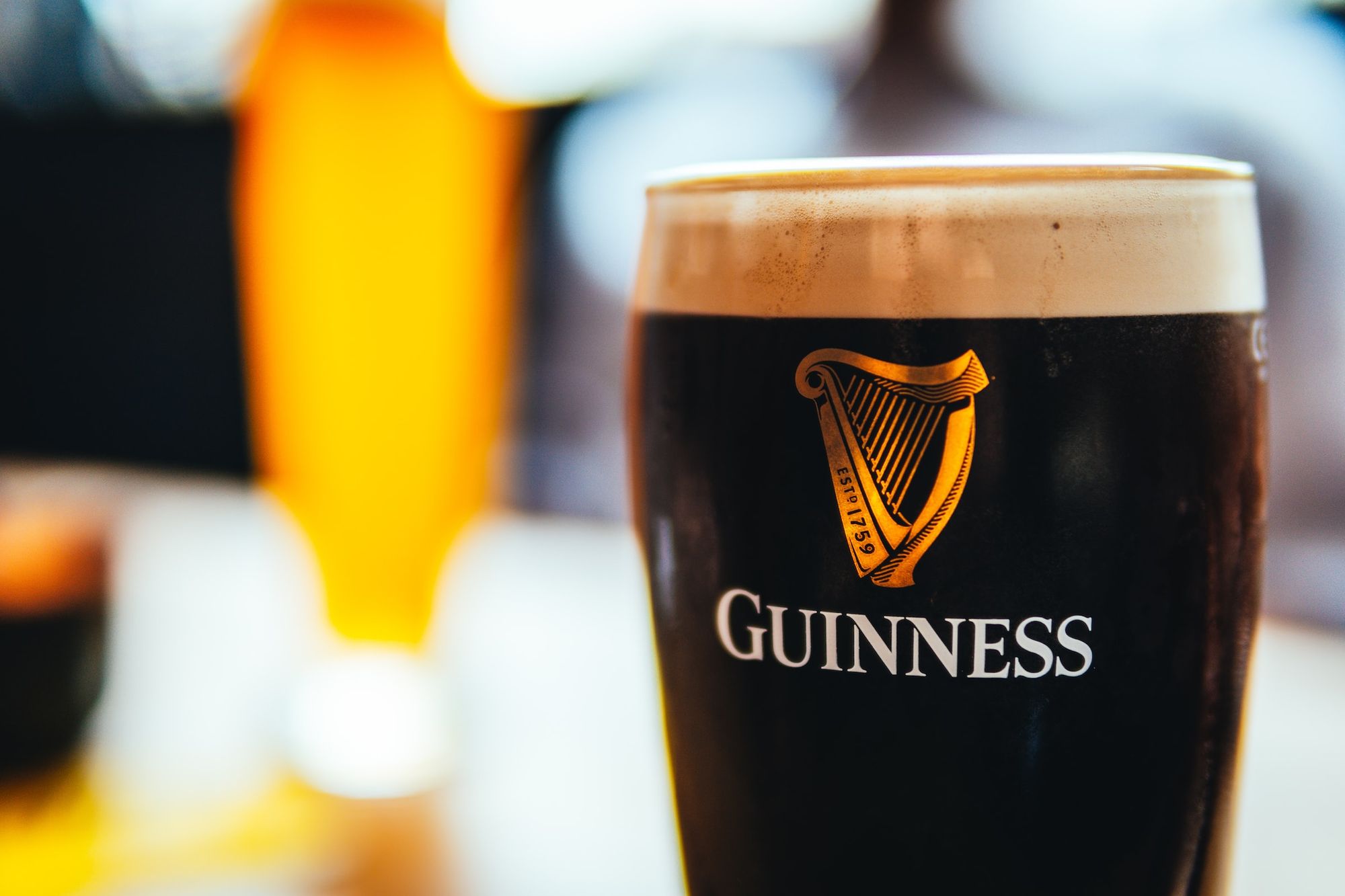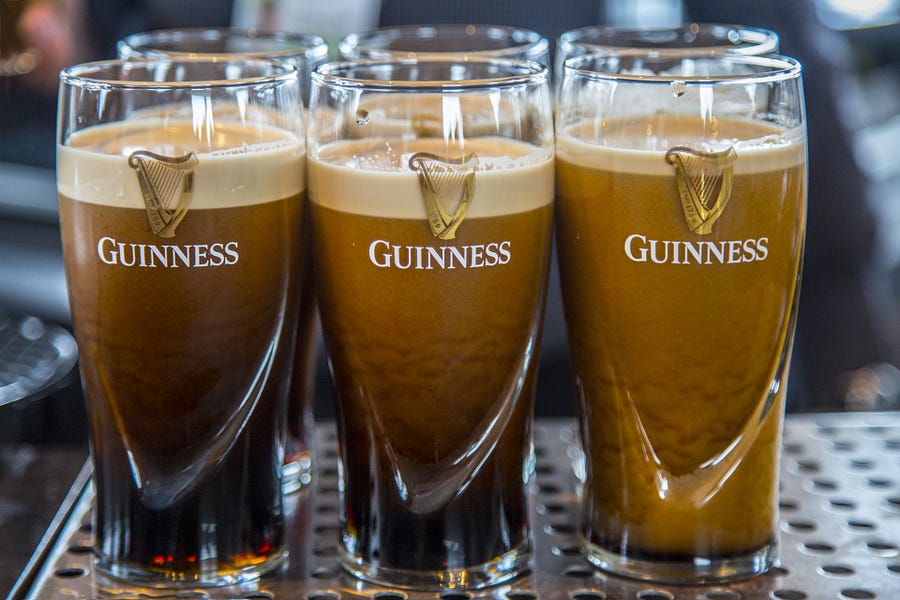The 9000 year lease - (No, that's not a typo)
A determined founder began Guinness with a vision and took a bold decision with a 9000-year lease. The company then started a brewery which defied nearly every norm in workplace relations.

Capital Thinking • Issue #1129 • View online
Guinness is one of Ireland’s greatest business success stories.
What started off as a small Dublin brewery has grown to produce one of the most consumed beers in the world, and become an iconic Irish brand.
No Great Stagnation in Guinness
Will O'Brien | The Fitzwilliam:
Guinness today has an inseparable connection with Irish culture. Guinness loyalists will scorn a barman for mispouring a pint of Guinness.
Corkman Ian Ryan has created a successful Instagram account documenting “shite pints of Guinness”. The “Guinness Advisor” has rated over 100 pubs in Dublin for their pints and recorded them on a map.
Taken over its entire history, Guinness may just be the most successful company Ireland has ever produced. In 1930, it was the seventh largest company in Britain or Ireland.1 It is one of our oldest companies of note.
Considering that it predates the Bank of Ireland and the State itself, it could even be said that Guinness is the longest-running successful large institution in Ireland.
The key to Guinness’ robustness has been innovation. Through a series of key innovations, Guinness was able to stay on top despite (among other things) a famine, mass emigration, two World Wars, a civil war, and the changeover from British to sovereign rule.
Guinness is responsible for changes in workplace relations, several foundational advances in the physics of brewing, and even the famous Student’s t-test in statistics. Indeed, Guinness has been one of the key drivers of innovation in Ireland.
The 9000-year lease
In 1759, in the southwest of Dublin city, a young entrepreneur named Arthur Guinness came across a brewery at St. James’ Gate available for rent. It had nearly all of the equipment required to brew the beer that he wanted to produce – stout.
The premises sat on four acres and had a keeve (a vat used in brewing), a mill, two malt houses, stabling for twelve horses and a loft to hold 200 tons of hay.
The site was an ideal location for a brewery. It had nearby access to rail lines, good roads, the river Liffey and the Grand Canal. Additionally, the brewery was close enough to the city centre to provide access to a good labour market.
However, the site was in disrepair and needed significant work to make it functional again. Guinness lacked the funds to buy the brewery outright so he needed to lease it. But if the lease were too short, then he ran the risk of not being able to renew.
On December 31st, 1759, Guinness agreed to lease the 90-by-300-foot brewery for the requested price of £45 per year on one condition: that he could have a 9000-year lease.
Such a long lease was unheard of at the time, and even today is extremely rare. The landlord accepted.
Years later, after Guinness had achieved some initial financial success, the company purchased the site outright and continued to expand its operations, growing its presence from four to sixty-four acres.
Transforming the workplace
Working is no longer just an exchange of labour for wages. It has become more common to see employers offering attractive non-salary benefits, such as financing employees’ education, healthcare, and even housing.
These perks are associated with various tech companies and were popularised in the modern era by Hewlett-Packard. Guinness, however, was ahead of the curve by hundreds of years.
If you got a job in Guinness 100 or 200 years ago, you would be the envy of your peers. Dismissals and resignations were rare, and the salaries were 10-20% above the Dublin average. Employees enjoyed a host of benefits that were unheard of elsewhere, including:
- Generous paid annual leave: This is common now but it only became mandatory in the early 20th century.
- Free meals: All employees were entitled to three meals a day at an on-site restaurant.
- Free family trips: From 1886 on, a system of annual excursions was introduced, providing Guinness employees with free train tickets and an allowance for day trips with family.
- Free healthcare: Employees and their families received free healthcare with the first on-site clinic being opened in 1870. By the 1930s, this clinic employed doctors, dentists, chemists, nurses, and a masseuse. That’s right – Guinness had an on-site masseuse working in a brewery in 1930!
- Pension: Guinness was famous for its pension. Pensions only became commonplace through their widespread introduction by the State in the early 1900s. Guinness pensions date back to the 1860s; the first US corporation to introduce a corporate pension was American Express in 1875.
Guinness’ care for its employees extended beyond their working life.
If an employee died, generous benefits were passed on to the family. The pension would be passed on to the widows or orphans of deceased staff with an extra allowance being paid for every child under the age of fourteen.
Families would also receive burial allowances. Preference was given to widows of employees for employment as housekeepers, attendants and office cleaners within the Brewery, and a free dinner was given every weekday to the sons of widows if they attended school.
Guinness also improved access to affordable housing for employees. In 1872, Edward Cecil Guinness2 (Arthur’s grandson) built housing on a site near the brewery for nearly 300 brewery families.
The company also set up a Building Society in 1901 to provide low-interest rate loans with favourable terms to staff.
It’s clear that Guinness cared for its employees in a way that was very different to its peers at the time.
As we will see, Guinness relied on top talent – and these talented workers could only be retained if they loved working at Guinness.

*Featured post photo by George Bakos on Unsplash
